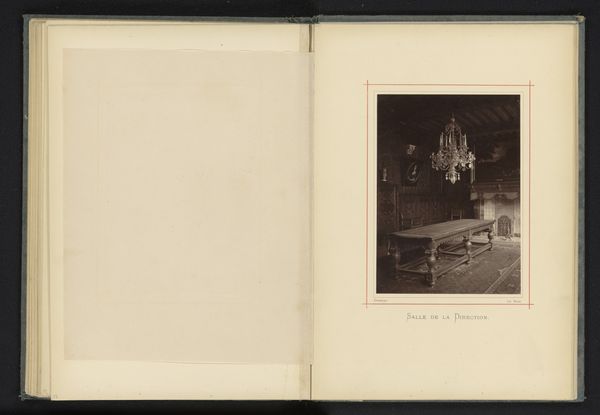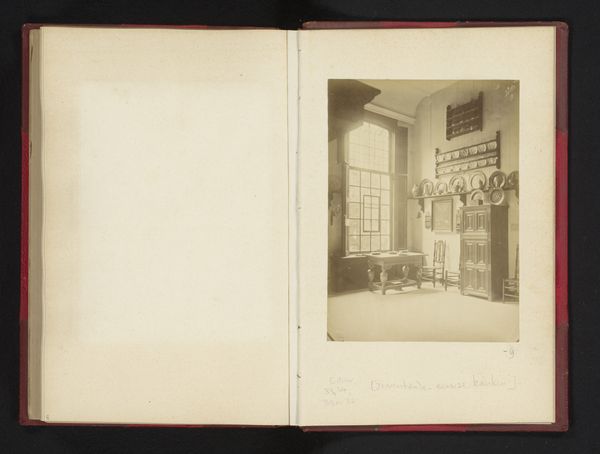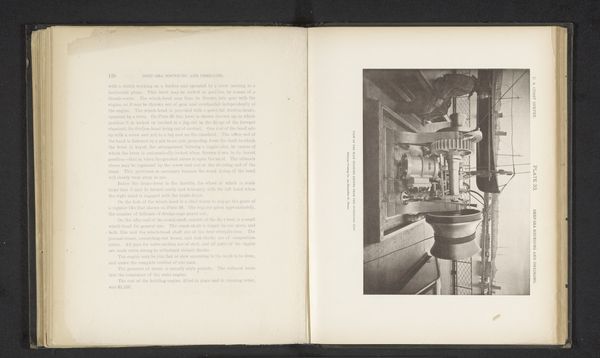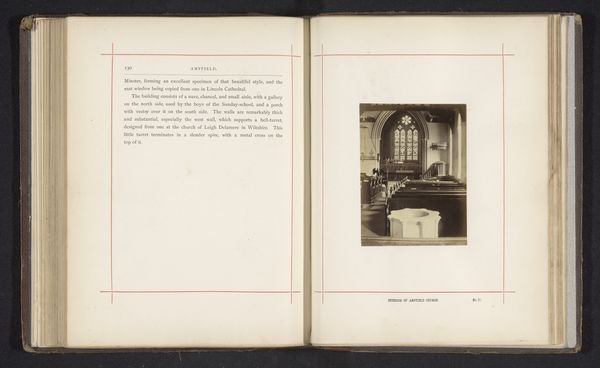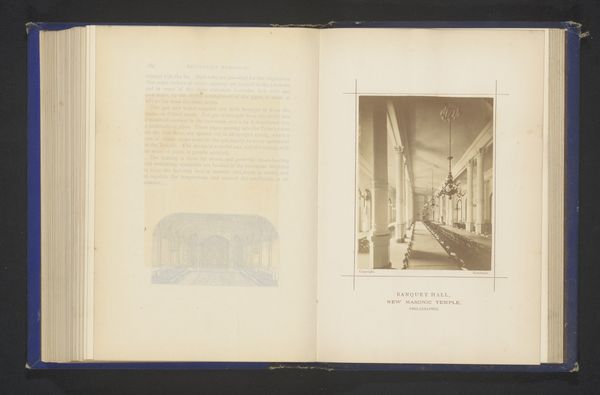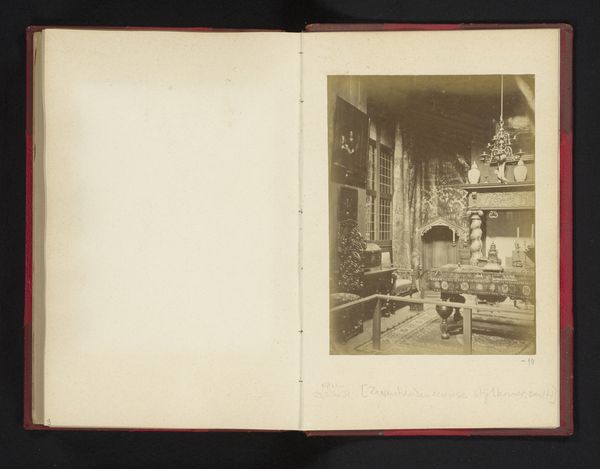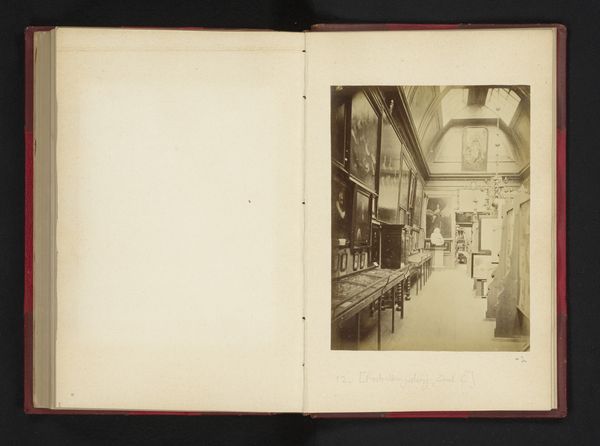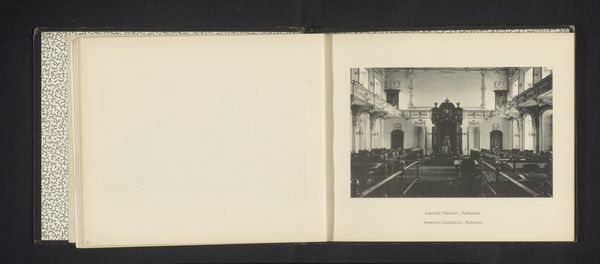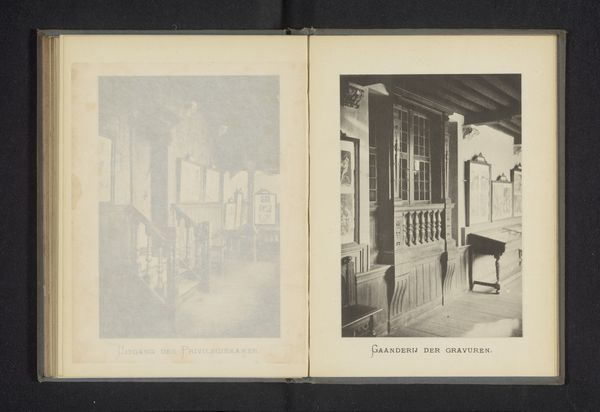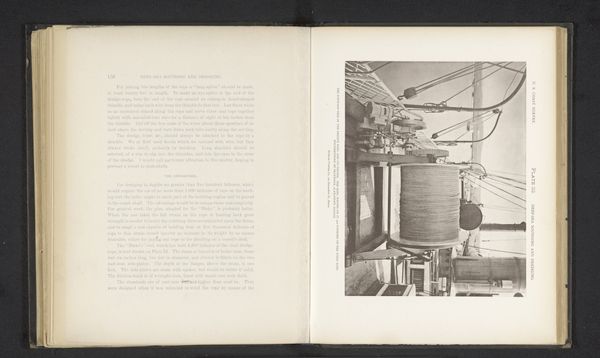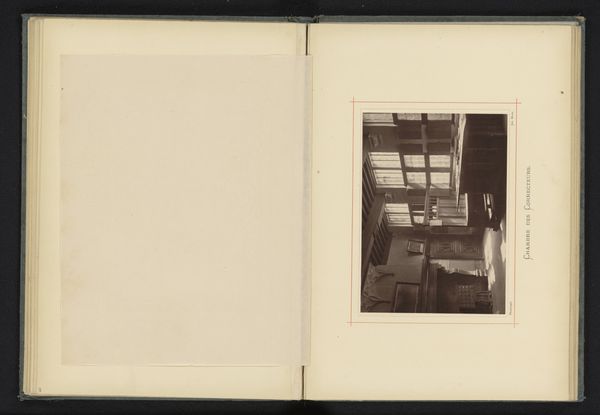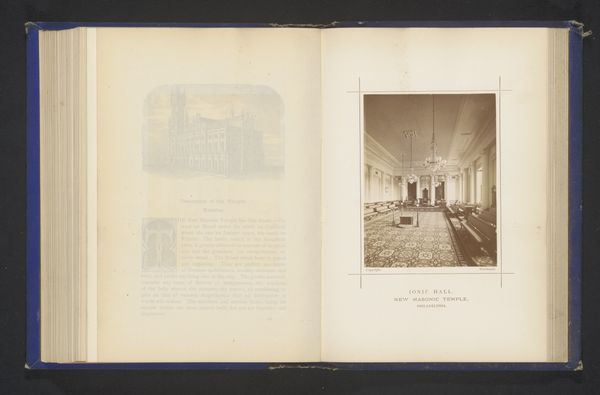
Kamer met tentoongestelde gravures in het huis van Christoffel Plantijn before 1878
0:00
0:00
lithograph, print, etching, photography, albumen-print
#
portrait
#
lithograph
# print
#
etching
#
photography
#
genre-painting
#
albumen-print
Dimensions: height 163 mm, width 118 mm
Copyright: Rijks Museum: Open Domain
Editor: So, this albumen print, “Kamer met tentoongestelde gravures in het huis van Christoffel Plantijn,” predates 1878 and is credited to Joseph Maes. It's a photograph of a room displaying prints, probably etchings or lithographs, in what looks like a well-furnished home. It makes me think about what people collected and valued back then, it has a certain stillness. What stands out to you? Curator: This image really speaks to the labor and materials involved in creating and consuming art during this period. It’s not just about the aesthetic value of the engravings displayed, but also the societal structures and economic systems that allowed for their production and collection. Editor: Can you expand on that a bit? I hadn't considered it that way. Curator: Consider the materials: albumen for the print itself, the paper, the inks, the wood and tools for making the original engravings. All of these point to a complex network of trade, craftsmanship, and the availability of resources. And who owned these materials? How were they acquired? Think about the social context. Plantijn was a prominent printer, but the market he inhabited depended on all these factors aligning, labor included. How were those artisans compensated for their work? What classes could access the consumption of printed material? Editor: That’s interesting. I was mainly looking at the prints within the photo, but now I see how much the actual making of it also affects its context. Curator: Exactly. By examining the physical components and processes, we can begin to challenge the traditional boundaries between 'high' art and the material conditions that make it possible. What have we forgotten by focusing solely on art and overlooking "craft" and the work and material hierarchies they depend upon? Editor: It makes you realize art isn't just hanging on the wall but embedded in a whole web of work, things, and even capital. Thanks! Curator: Indeed, viewing art this way makes the invisible visible, and transforms the photograph into an historical object which demands more interrogation.
Comments
No comments
Be the first to comment and join the conversation on the ultimate creative platform.
